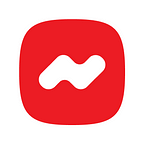The Design Process we follow here at Neointeraction Design
For a digital product to be successful, it’s business requirements and the results or goals should always be made clear, right from the beginning. This is just a small part of what we do for building a profitable and successful digital product. There is a lot of planning and time spent on understanding things like; the requirements of the users, the business logic, end-goals, and much more which we will uncover in this article.
What is a Design Process?
Let’s understand what a ‘Design Process’ is in the simplest of terms.
“A design process is a method of breaking down a complex project into smaller, more manageable parts. This process is used by architects, engineers, physicists, and other designers to solve complex problems”
Now that we understand what the design process means, let’s dive a little deeper. One of the most important things to remember here is that every process could vary based on the problem that you’re trying to solve. One approach may not always help you in reaching your goals. Each project will have its different share of problems and goals which you will have to define and act accordingly. But don’t worry, the steps in any kind of design process are usually very flexible and you always have the freedom to improvise.
The image below shows a basic framework of any design process, which you can refer to and develop your own process with the help of it.
Why a Design Process is needed?
And now that we have a better understanding of the Design Process, we will see why the design process is so important in every type of project.
Having a design process allows us to be more efficient and effective when we are trying to solve a problem. Since there is a plan laid out for us that has been researched and well thought out, we can make decisions faster and move forward without taking a lot of risks. And sometimes, when we follow a detailed process, it helps us find solutions to problems that we might not even realize.
We may not be able to justify the importance of the design process in this article alone, but we sure can summarize and shed some more light on this powerful process. Here are some of the key points:
1. User-Centric
The process starts with user data that helps in creating a design plan that addresses real user needs, and then tests those designs with the actual users.
2. Flexibility
Based on the requirements and the problem you’re trying to solve, adjusting the design process to your advantage is always very handy. Always remember you’re free to improvise.
3. Innovation
The process can sometimes show you a completely different issue from what you had initially imagined. With the newly found problem, you’re now forced to think differently and explore other areas which help in developing new innovative ideas.
What is Neointeraction’s Design Process?
With the rise and change of the digital product space in the last decade, every new product has different requirements and goals. Due to this rapid change, we too improvised and improved our design process with every new project that we handled. We at Neointeraction very much strive to deliver the best experience for our clients and their users. And for a successful end result, there’s this strong foundation that we’ve built over the years and we follow it thoroughly, i.e; our design process.
Here’s a brief about our way of working, thinking, and executing.
1. Understanding the goals
The discovery phase of the project requires a close study of user needs & business goals. Our team starts a project by studying this context, its user types, and the functional flow. A design project is strategized around a user problem that needs solving.
2. Setting the UX Strategy and Plan
Focusing on bringing the right web & mobile products to end-users, we apply the principles of design thinking by listening to our stakeholder’s feedback. We strongly believe that with the right strategy & planning, a business can bring measurable outcomes.
3. Interaction Design (Low & High Fidelity Prototyping)
After understanding the user’s goals, the navigation experience will be designed, prototyped, and linked to various user journeys. The Interaction Design process is always done in collaboration with the user, business owners, and the technical team.
4. Bringing the WOW factor
Interaction Design is enhanced by a beautifully crafted visual design. The end-user interacts at the UI level for better discovery, engagement, and transactions. Our UI Design team understands the need of following pixel-level detailing and standards.
5. Design to Implementation
The success of any design depends on how well it is implemented. We understand the importance of following the best standard practices for a pixel-perfect UI implementation for the web and mobile.
Conclusion
With the tech industry evolving rapidly, the digital products that are being thought of require a lot of planning and execution as they carry a lot of expectations. The overall experience the product delivers to it’s users is an important factor for a business to stay active in this competitive world. And with new advanced technologies, the complexities of every product also seem to grow bigger. The solution to all these challenges is proper planning, thinking, and implementation which can be done with the help of a ‘Design Process’.
